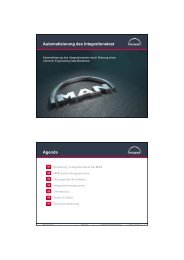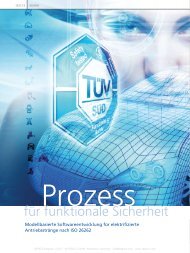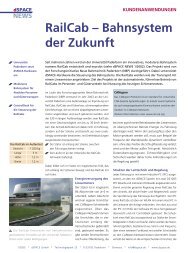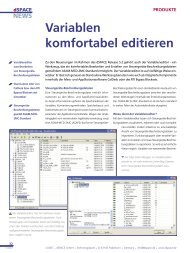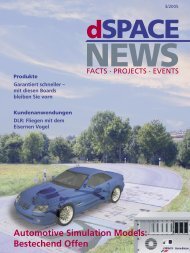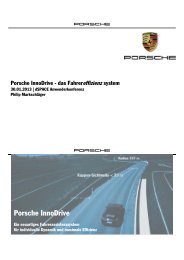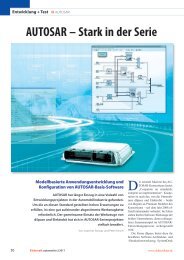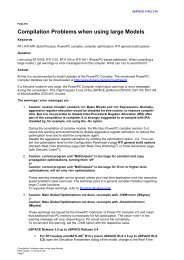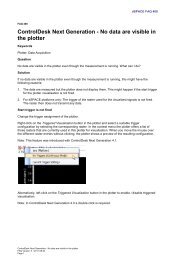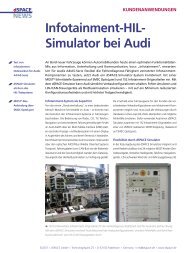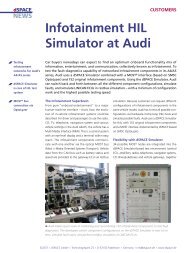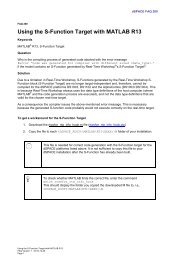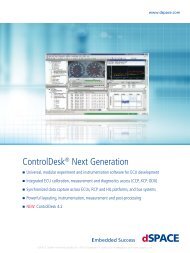magazinE - dSPACE
magazinE - dSPACE
magazinE - dSPACE
Create successful ePaper yourself
Turn your PDF publications into a flip-book with our unique Google optimized e-Paper software.
Construction, mining, demolition and forestry<br />
in the modern age are dynamic, increasingly<br />
complex tasks, and the heavyduty equipment<br />
involved has a lot more intelligence inside than<br />
one would guess from the outside. The release<br />
tests on the electronic systems for the brand<br />
new machinery illustrate how development<br />
processes are conducted at Caterpillar. From<br />
function design with custombuilt highfidelity<br />
models to the validation of control software,<br />
Caterpillar has efficient processes in place.<br />
Caterpillar (Cat, for short) is an international<br />
company that manufactures<br />
heavyduty equipment for the worldwide<br />
markets of construction, mining,<br />
agriculture, and power generation.<br />
The products are equipped with<br />
electronic control units (ECUs) ranging<br />
from engine and transmission<br />
mana gement to dedicated control<br />
devices for specific system features.<br />
At Caterpillar, softwareintheloop<br />
(SIL) and hardwareintheloop (HIL)<br />
testing are the standard methods<br />
for productive development and to<br />
efficiently ensure the quality and<br />
reliability of these ECUs.<br />
To test the engine ECU of its heavyduty<br />
equipment, Caterpillar chose<br />
the diesel engine model and physical<br />
turbocharger model from <strong>dSPACE</strong>’s<br />
Automotive Simulation Models<br />
(ASM). A customized drive train<br />
model from Caterpillar was used to<br />
meet the requirements of the equipment<br />
drive train. Due to the openness<br />
of the ASM, it was quite easy to<br />
integrate the custom drive train<br />
models with ASM.<br />
High-Fidelity models for<br />
Combustion Control<br />
The development of new control<br />
functions begins with using highfidelity<br />
engine models created by<br />
Caterpillar that simulate the combustion<br />
process in great detail – but not<br />
in real time of course. The result of<br />
many years of development, these<br />
“Enterprise” models are ideal for<br />
function design, where precise control<br />
of the fuel and air systems and of<br />
combustion is essential. The models<br />
use a onedimensional approach. The<br />
combustion models also take cylinder<br />
pressure into account. During simulation<br />
with Enterprise, development<br />
focuses on optimized torque output,<br />
minimized fuel consumption, etc.,<br />
but not on diagnostics and interECU<br />
communication yet.<br />
Early Controller Software<br />
Validation<br />
In the next step, more ECU functions<br />
are integrated with the combustion<br />
control functions. SIL testing is a<br />
common procedure at Caterpillar to<br />
pAGe 25



